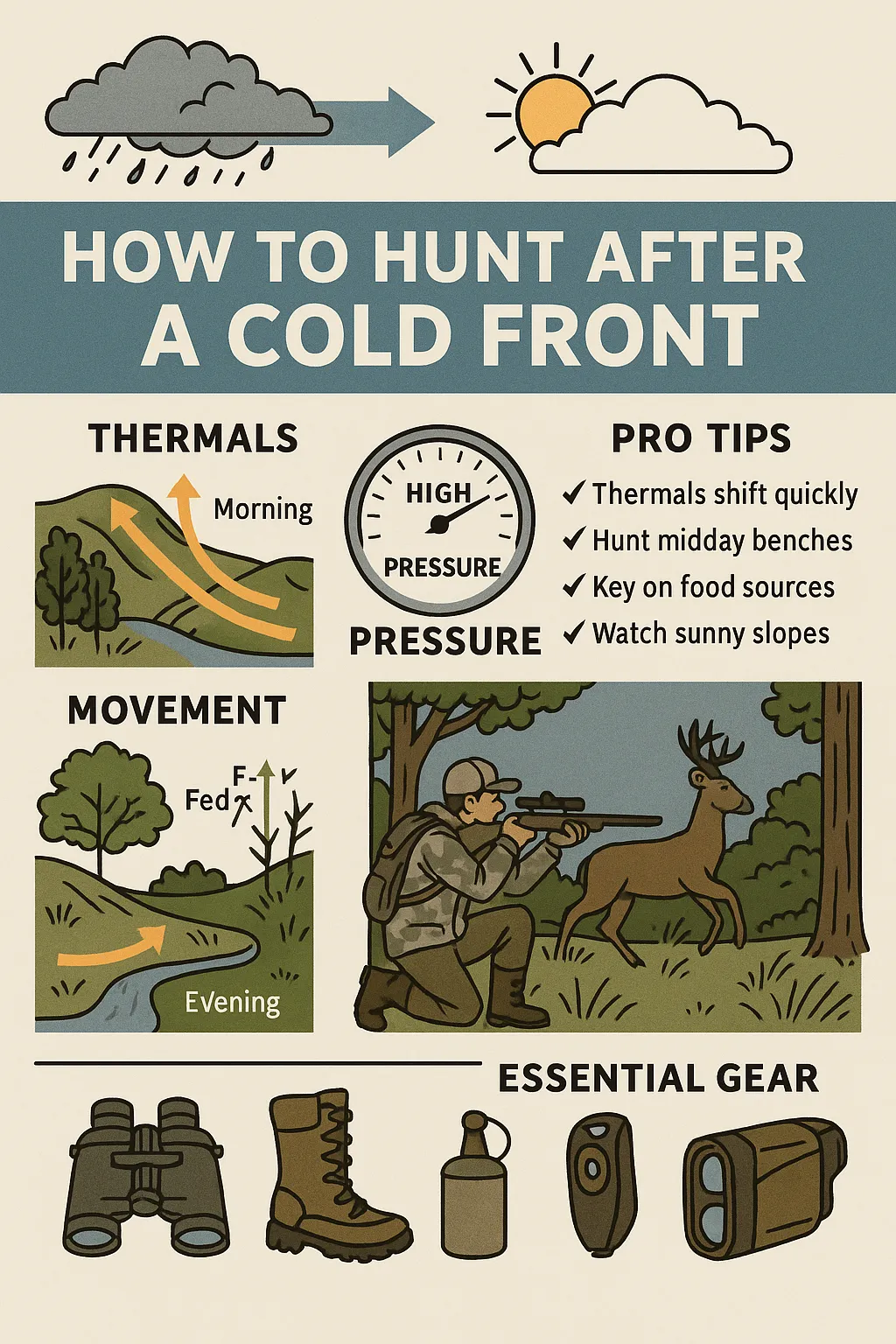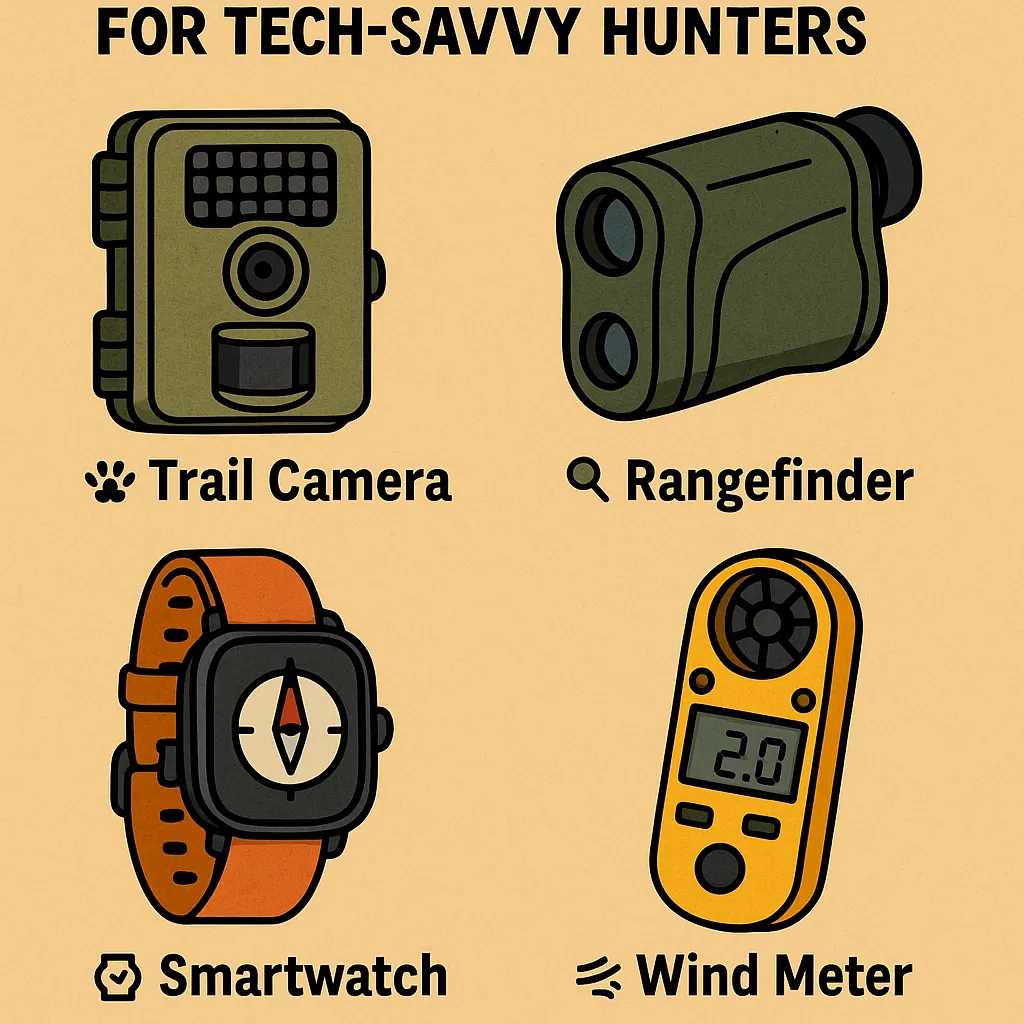
How to Pack Tech Gear Safely for All-Weather Hunts
Whether it’s a frosty elk basin or a swampy turkey roost, your hunt depends on more than boots and bullets—it depends on keeping your tech alive. From GPS units to satellite communicators, thermal monoculars to power banks, 2025 hunters are taking more gear into the field than ever before. But water, shock, and cold can kill electronics just as fast as a busted scope. Here’s how to pack your tech right for rugged, wet, and unpredictable hunts.
🌦️ Know the Hazards: What You’re Up Against
🔹 Water: Rain, snow, river crossings, condensation 🔹 Dust & Debris: Sand, mud, pine needles 🔹 Cold: Lithium battery drain below freezing 🔹 Impact: Falls, drops, pack slams
🎙️ “I lost a rangefinder to fog and a power bank to a wet tent floor. Never again.”
— Jared H., Washington
🧰 Step 1: Use Rugged & Waterproof Storage
🥇 Best Storage Options:
- Pelican-style hard cases with foam inserts
- Roll-top dry bags for lightweight waterproofing
- Padded electronics pouches with fleece lining
- Ammo cans retrofitted with foam & desiccants
🎯 Field Tip: Label each pouch by gear type—NAV (navigation), PWR (power), OPT (optics), COM (communications)
🎙️ “I use a hard case inside my frame pack. One for comms, one for optics. Even took a fall once—gear was fine.”
— Melissa D., Montana
🔋 Step 2: Protect Batteries & Extend Power Life
🔌 Battery Tips for Cold Weather:
- Use lithium over alkaline—performs better in cold
- Store batteries and power banks close to your body
- Keep silica packs in power cases to reduce condensation
⚡ Charging & Cable Management:
- Pre-charge all gear and label cables by device
- Bring a multi-outlet USB hub
- Use Velcro loops or zip ties to keep cords organized
🎙️ “My inReach lives in an insulated pouch with a hot hands packet. Cold won’t kill it.”
— James K., Wyoming
🌨️ Step 3: Weatherproof Each Tech Item Individually
| Device | Protection Gear | Packing Method |
|---|---|---|
| GPS unit | Silicone sleeve + dry bag | Outer pouch, top access |
| Rangefinder | Rugged neoprene case | Belt holster or bino harness |
| Satellite communicator | Shockproof case | Inside pack, quick-grab spot |
| Smartphone | Waterproof phone bag | Chest pocket + spare dry sleeve |
| Power banks | Hard case + desiccants | Insulated gear pocket |
| Headlamp | Zip pouch + extra O-rings | Lid pocket or hip belt |
🎙️ “Every piece has a case. If you don’t respect your gear, don’t expect it to work.”
— Angelica T., Alberta
🧠 Pro Tips from Hardcore Hunters
- Double bag everything—especially for river crossings
- Add a field repair kit: Mini screwdriver, electrical tape, extra rubber gaskets
- Use hand warmers for battery longevity in extreme cold
- Label all cords so you’re not guessing in the dark
- Use clear plastic bags inside dry bags for visual gear access
🎙️ “My tech kit weighs 5 lbs but keeps my camp, nav, and comms running clean all week.”
— Luke V., New York
📣 Sources & Gear Picks from the Field
- Retailers: GoHunt Tech Shop, REI, Backcountry, Field Optics Research
- YouTube Field Tests: HuntSolar, Survival Tech Talk, Western Gear Lab
- Forums: Rokslide, SaddleHunter, Backwoods Tech
Pro Tip: If it’s not field-tested, it’s not ready. Simulate your pack system before season.
🌟 Final Word: Respect the Tech, Hunt With Confidence
A field-hardened tech system means fewer failures and faster decisions. When your batteries hold, your maps stay live, and your rangefinder still pings in the fog, you’re not just hunting—you’re optimizing the whole experience. Pack it right, power it smart, and let nothing slow your season down.
“The woods are unforgiving. But if your gear is ready, you don’t have to be.”
Leave A Comment
Related Posts
Women-Specific Hunting Gear That Actually Performs in 2025 Forget the […]
Must-Have Gadgets Under $100 for Tech-Savvy Hunters You don’t need […]
Eco-Friendly & Sustainable Hunting Gear Options in 2025 The modern […]








